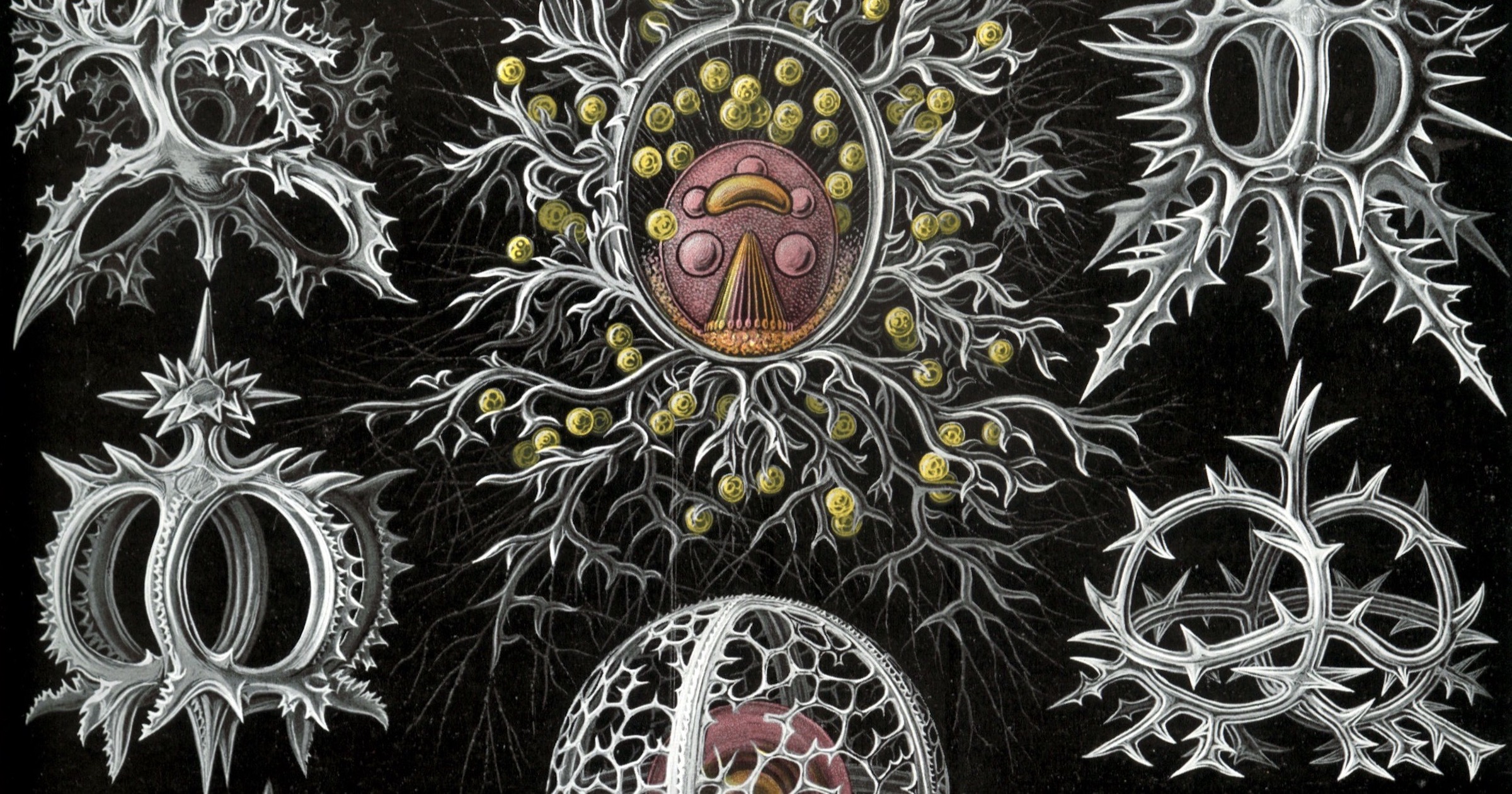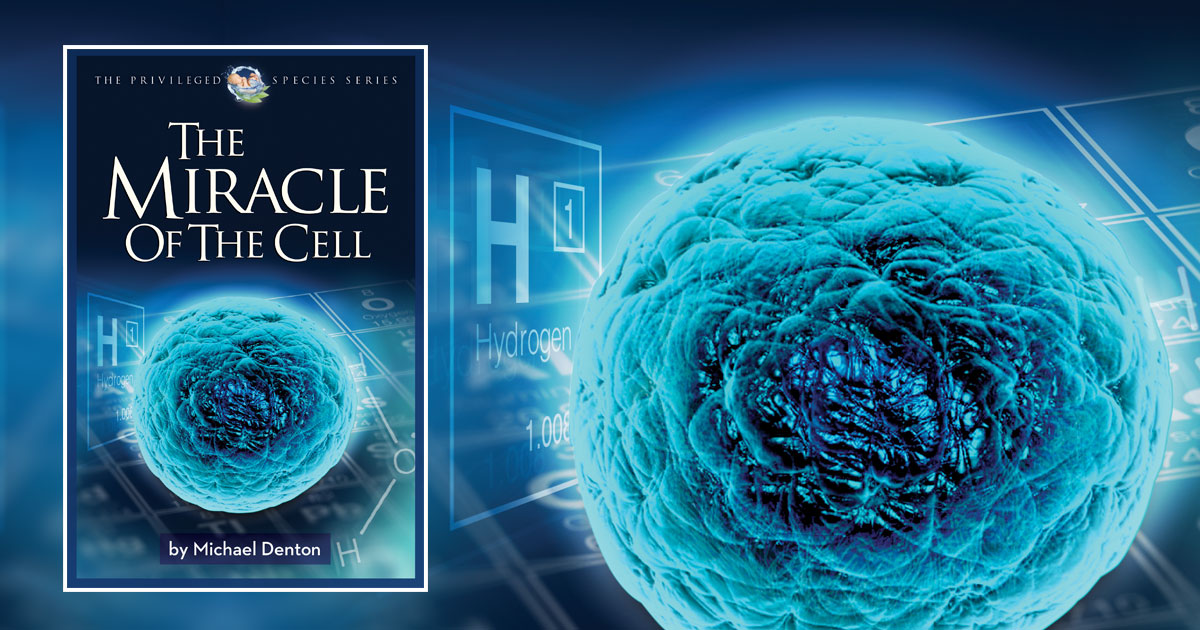 Intelligent Design
Intelligent Design
Excerpt — The Infinite Complexity of Cells

Editor’s note: We are pleased to offer this excerpt from Dr. Denton’s new book, The Miracle of the Cell.
In terms of compressed complexity, cells are without peer in the material world, actualized or imagined. And there is likely far more complexity still to uncover. Even as recently as 1913, when Lawrence Henderson composed his classic The Fitness of the Environment, the cell was a black box, its actual molecular complexity a mysterious unknown. Only as the veil began to lift with the mid-century molecular biological revolution did science begin to glimpse the sophistication of these extraordinary pieces of matter. Subsequently, every decade of research has revealed further depths of complexity. The discovery of ever more intricate structures and systems with each increase in knowledge — including vastly complex DNA topologies and a vast and growing inventory of mini-RNA regulator molecules — tells us there is probably much more to uncover. What we glimpse now may be only a tiny fraction of what remains to be discovered.
As Erica Hayden confessed in the journal Nature, “As sequencing and other new technologies spew forth data,” the complexity unearthed by cell biology “has seemed to grow by orders of magnitude. Delving into it has been like zooming into a Mandelbrot set… that reveals ever more intricate patterns as one peers closer at its boundary.”
A Third Infinity
There is much more to discover about the cell, but even from our current limited knowledge of its depths it is clear that this tiny unit of compact, adaptive sophistication constitutes something like a third infinity. Where the cosmos feels infinitely large and the atomic realm infinitely small, the cell feels infinitely complex.
But cells are not just complex beyond any sensible measure and beyond any other conceivable material form. They appear in so many ways supremely fit to fulfill their role as the basic unit of biological life. One element of this fitness is manifest in their incomparable diversity of form. Contrast a neuron with a red blood cell, a skin cell with a liver cell, an amoeboid leucocyte with a muscle cell. Each of these different forms is found in the human body, and many more. Or consider the diversity of ciliate protozoans. From the trumpet-like Stentor to the dashing Paramecium, the universe of ciliate form is absurdly diverse. Or take the radiolarians. Even within this small related group of organisms, the diversity of cell forms is stunning. And yet every member of this fantastic zoo of radiolarian forms is built on exactly the same canonical design.
Unique Fitness
The unique fitness of the cell to serve as the fundamental unit of life is also manifest in its amazing abilities and the diversity of functions it performs. Even the tiny E. coli, a cylinder-shaped bacterium in the human gut, has spectacular capabilities. Howard Berg has marveled at the versatility and capacities of this minuscule organism, calling its talents “legion.” He notes that this tiny organism, less than one-millionth of a meter in diameter and two-millionths of a meter long, so small that “20 would fit end-to-end in a single rod cell of the human retina,” is nevertheless “adept at counting molecules of specific sugars, amino acids, or dipeptides; at integration of similar or dissimilar sensory inputs over space and time; at comparing counts taken over the recent and not so recent past; at triggering an all-or-nothing response; at swimming in a viscous medium… even pattern formation.”

Cells also move in many diverse ways. E. coli travel by the propeller- like action of the bacterial flagellum. Others do so via the beating action of cilia. Some creep and crawl. Some put out pseudopodia and grasp small objects in their immediate vicinity.
Some cells can survive desiccation for hundreds of years. Cells possess internal clocks and can measure the passage of time. They can sense electrical and magnetic fields, and communicate via chemical and electrical signals. Some can encase themselves in armor-like skins. Some may be able to see; one species of ciliate has a lens able to focus an image on another region of the cytoplasm — in effect, an eye. All can replicate themselves with seeming ease, an act far beyond even the most complex human artifact. Some can even reconstruct themselves completely from tiny fractions cut surgically from the cell!
Capable of…Almost Anything
These remarkable specks of organized matter have constructed every multicellular organism on Earth, including the human body, itself a vast collective of as many as 100 million million cells. Cells compose the human brain, making a million connections a minute for nine months during gestation. Cells build blue whales, butterflies, birds, and the giant sequoias of Yosemite. Cells constituted the dinosaurs and all past life ever born on Earth. And through the activities of some of the simplest of their kind, cells gradually terraformed the planet over the past 3,000 million years, generating oxygen via photosynthesis and releasing its energizing powers for all the higher life forms. They are the universal constructor set of life on Earth. In short, they can do almost anything, adopt almost any shape, and obey any order. They appear, in every sense, perfectly adapted to their assigned task of creating a biosphere replete with multicellular organisms like ourselves.
When we observe the goings-on of protozoans in a drop of pond water or the antics of an amoeboid leucocyte in the human blood stream chasing a bacterium, it is hard to resist the feeling that these microscopic life forms are sentient, autonomous beings. This was the case when we had relatively primitive microscopic technology more than one hundred years ago, and it is all the more so today.
It is not just their hunting strategies (seen in a video of a leucocyte chasing its prey, below) that resemble the behaviors of higher organisms.
Another striking example is the courtship rituals of ciliates, rituals that include pre-conjugal mating dances, reciprocal learning, repeated touching of prospective mates, and even deceit and cheating when communicating reproductive fitness to potential mates. One of the founders of behaviorism, Herbert Spencer Jennings, strongly suspected that protozoa were sentient. As he confessed, “If Amoeba were a large animal, so as to come within the everyday experience of human beings, its behavior would at once call forth the attribution to it of states of pleasure and pain, of hunger, desire, and the like, on precisely the same basis as we attribute these things to the dog.”
“Simple and Crude”?
Jennings’s thoughts were recently echoed by biologist Brian Ford: “The microscopic world of the single, living cell mirrors our own in so many ways: cells are essentially autonomous, sentient and ingenious. In the lives of single cells we can perceive the roots of our own intelligence.” And as Ford continues, “We regard amoebas as simple and crude. Yet many types of amoeba construct glassy shells by picking up sand grains from the mud in which they live. The typical Difflugia shell, for example, is shaped like a vase, and has a remarkable symmetry… We just don’t know how this single-celled organism builds its shell.”
Even if cells are not sentient beings, their accomplishments, their complexity, their diversity of structure and function, remain to astound us. The unique powers of cells—what Jacques Monod called their “demonic catalytic powers” — and their extraordinary fitness to play their unique role as the building blocks of all life on Earth are a wonder apparent to anyone who gives them even a cursory consideration.
The Unique Fitness Paradigm
An even greater wonder is the stunning prior fitness in nature that enables the material actualization of the canonical carbon-based cell. This prior fitness is manifest in the unique utility of the properties of a significant number of the atoms in the first half of the periodic table to serve highly specific ends essential for the assembly of the core macromolecular constituents and the physiological functioning of the cell. I call this the unique fitness paradigm.
This prior fitness is manifest also in the extraordinary utility of water to serve as the matrix of the cell, and by chemical processes in the dark vastness of interstellar space that result in the abiotic synthesis of many of the molecular monomers used by the first cells to build their macromolecular constituents. In other words, the “demonic” fitness of the cell depends on a deeper fitness prefigured into the very fabric of reality. This deeper fitness is inscribed in the laws of nature from the beginning of time, a fitness that reveals the cosmos to be, as Henderson proclaimed, a profoundly biocentric whole.

